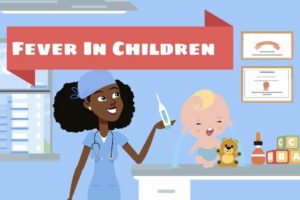Social Media Woes
Nosebleeds are what I really want to talk to you about today. Yet I cannot help but observe that the interesting thing about getting older is that I didn’t really get that much wiser. For every lesson I think I’ve learnt, I discover two more unsolvable mysteries.
For instance, in my last post, Let Us Talk About Fever In Children, I thought I had mastered the art of making a cartoon infomercial, having spent days to produce that one minute video. However, I realised I had no way of sharing it easily. At least not without making my profiles public and relying on heaps of help.
Meanwhile, here’s what I would like to share this weekend. Over Chinese New Year, when I was on shift, some parents felt frustrated after waiting for a long time because they thought their children had a big emergency: nosebleeds. Imagine how they felt when they realized they did not need to come to the Children’s Emergency after all.
A Myth About Nosebleeds
Sometimes parents mistake their children’s nosebleeds for a symptom of cancer. While nosebleeds can be an ominous predictor of cancer in the older male smoker who likes preserved food, it’s much less likely in kids.
Similarly, kids rarely need a specialist follow up unless it’s for the ENT surgeon to do a scope to locate an abnormally large blood vessel. Subsequently, the surgeon can burn this troublesome vessel off, which doesn’t hurt, but it doesn’t guarantee the nosebleeds will stop.
The Truth About Nosebleeds
In fact, nosebleeds are common in young children and tend to decrease when their hormones kick in as they are older.
Triggers
Many triggers such as viral infections and nose-picking contribute to the high incidence. With affluence, many children also sleep in air-conditioned rooms where the air is dry. If so, reduce triggers such as dry air by adding moisture to the inhaled air. For instance you could apply Vaseline to the inside walls of the nostrils, or use a humidifier. In addition, there are a great many number of unexplained nosebleeds, the medical term being “idiopathic”. It might mean we doctors are idiots for not being able to tell you the specific reason why your child has a nosebleed. Regardless, nosebleeds are seldom harmful.
Red Flags
I would worry if it is accompanied by other symptoms like days of fever followed by rash and bleeding gums. That might be suggestive of Dengue Fever which is endemic in Singapore. Four years ago I remember making this poster for the People’s Association about nosebleeds in Dengue: https://www.pa.gov.sg/docs/default-source/module-documents/page-documents/cdh—dengue-fever.pdf.
In addition, bleeding elsewhere is a red flag, such as multiple bruises on the body from relatively trivial trauma. That might suggest a bleeding disorder which should be looked into.
Finally I would pay close attention if this occurred after head injury. My main concern would be a fracture in the base of skull.
First Aid
Since most nosebleeds are not associated with dangerous causes, the most important thing we can do as parents is first aid. Pinch the soft lower part of the nose together and breathe through the mouth. It helps to sit up and lean forward so that the swallowed blood can be easily spat out. If the child puts his head back he might swallow the blood which may make him nauseated.
Here’s a little cartoon clip I made with my student & daughter. I hope it summarises the problem of nosebleeds adequately. And oh, if you can figure out how to best share it, please let me know. Puzzling over this is giving me nosebleeds.









Leave a Reply
Your email is safe with us.